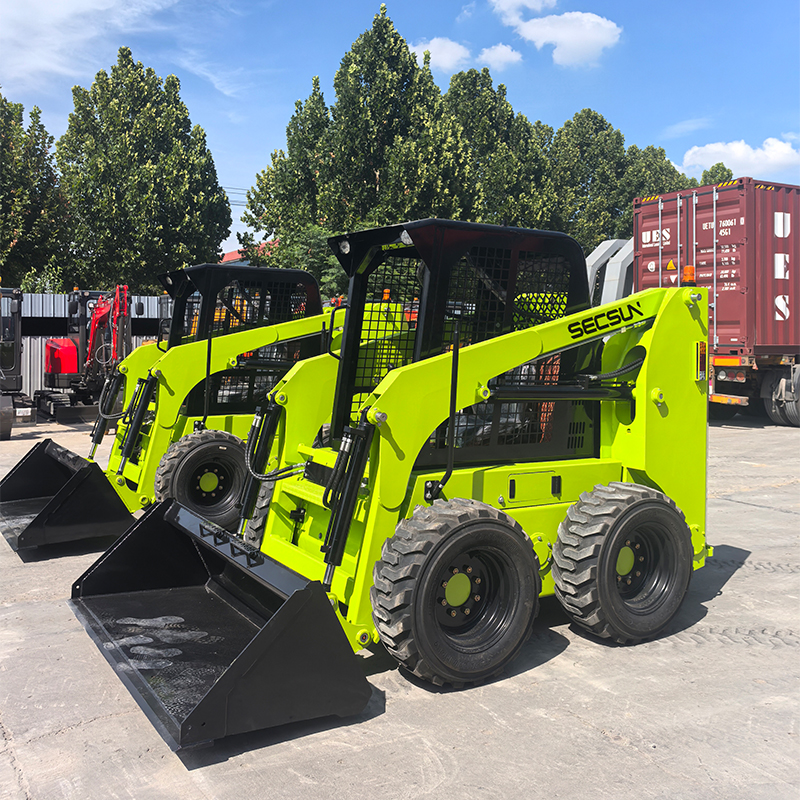At SECSUN, we've refined a five-step process that combines diesel fuel's solvent power with specialized degreasers to tackle even the most stubborn grease deposits - the same proven method used by our factory service technicians to maintain fleet equipment.
Step 1: Diesel Pre-Treatment for Stubborn Grease
Begin the cleaning process by filling a spray bottle with standard diesel fuel. Thoroughly saturate all grease-encrusted areas, particularly around hydraulic joints and bucket linkages. The diesel acts as a powerful solvent, penetrating and softening hardened grease deposits. Allow 10-30 minutes for the diesel to break down the grease bonds. After this dwell time, use a steel wool pad to scrape away the loosened grime. This initial treatment typically removes about 70% of surface grease without damaging underlying paint when performed correctly.
Step 2: Heavy-Duty Degreaser Application
Once the diesel has done its initial work, apply a commercial heavy-duty degreaser. CAUTION: Always conduct a spot test on inconspicuous paint areas first, as some older or low-quality paint jobs may discolor or peel. For operator safety, wear nitrile gloves and protective goggles - these alkaline cleaners can cause painful chemical burns on skin and severe eye irritation. Spray the degreaser evenly across treated areas, allowing it to foam and penetrate for 5-7 minutes. The combination of diesel pre-treatment and degreaser will have softened even decade-old grease accumulations.
Step 3: Secondary Cleaning Phase
For persistent deposits that resist initial cleaning, create a paste using industrial hand cleaner powder (containing pumice or other mild abrasives) and apply it with a fresh steel wool pad. The mechanical action of the abrasive combined with the chemical cleaners will remove what the solvents alone cannot. Pay special attention to pivot points and grease fittings where contamination often hides. This stage typically eliminates 95% of all grease buildup when performed systematically.
Step 4: Residual Oil Removal
After the heavy cleaning, surfaces will feel tacky from residual oils. Mix a strong solution of laundry detergent (approximately 1 cup per gallon of warm water) and thoroughly wipe down all cleaned areas. The surfactants in the detergent will emulsify remaining oils, preparing surfaces for final rinsing. Use clean microfiber cloths for this stage to avoid reintroducing contaminants.
Step 5: Pressure Washing Protocol
Complete the process with careful pressure washing. Maintain the spray wand at least 12 inches from surfaces and use a 25° nozzle tip at no more than 1,200 PSI to prevent paint damage. For equipment without access to pressure washers, a garden hose with a high-flow nozzle and stiff-bristle brush can achieve similar results with more elbow grease. Stubborn areas may require repeating steps 1-4 before final rinsing.
Professional Tips:
• Always clean from top to bottom to prevent recontamination
• Avoid allowing diesel or degreasers to dry on surfaces
• Immediately apply corrosion inhibitor after drying in coastal environments
• Consider using biodegradable, citrus-based cleaners for regular maintenance
SECSUN Maintenance Reminder:
Regular cleaning prevents 80% of hydraulic cylinder seal failures. For extreme buildup cases, our service centers offer industrial steam cleaning that eliminates the need for harsh chemicals.
 Second Factory Visit Solidifies Trust: Congolese Distributors Place Third Order with SECSUN
Second Factory Visit Solidifies Trust: Congolese Distributors Place Third Order with SECSUN
 SECSUN 1.5 Ton Wheel Loader: The Global Choice for Efficient Light-Duty Operations
SECSUN 1.5 Ton Wheel Loader: The Global Choice for Efficient Light-Duty Operations
 5 Key Factors to Consider When Buying a Skid Steer Loader
5 Key Factors to Consider When Buying a Skid Steer Loader
 SECSUN Concludes a Successful Participation at the 138th Canton Fair: Forging Global Partnerships and Showcasing Machinery Excellence
SECSUN Concludes a Successful Participation at the 138th Canton Fair: Forging Global Partnerships and Showcasing Machinery Excellence